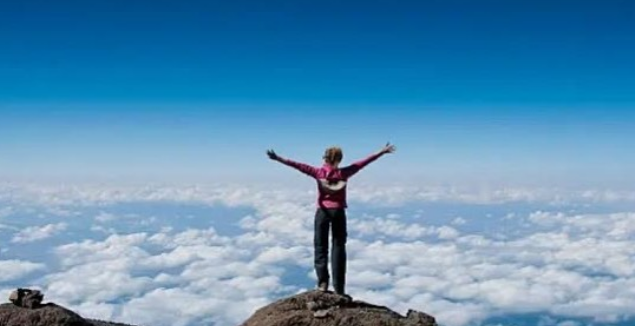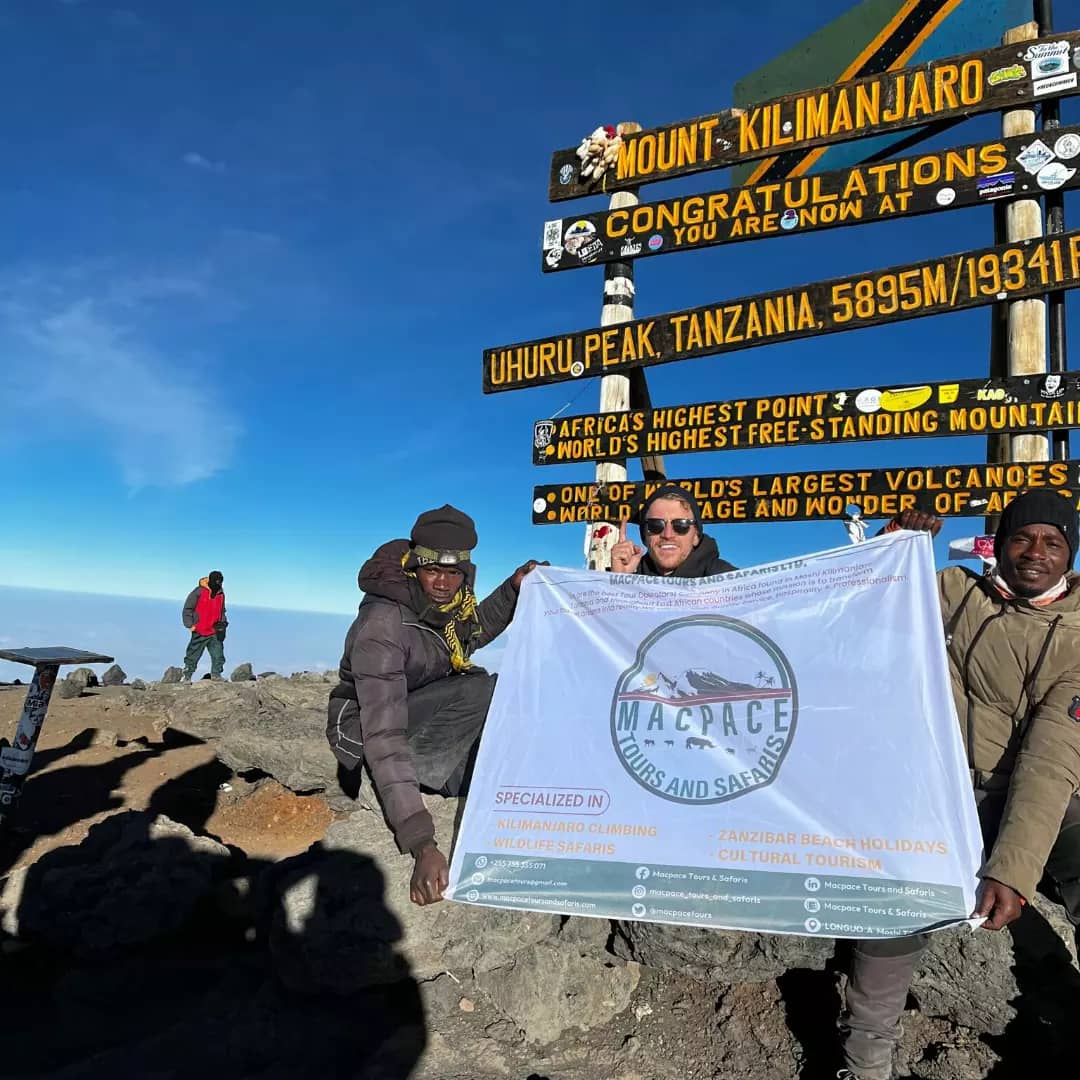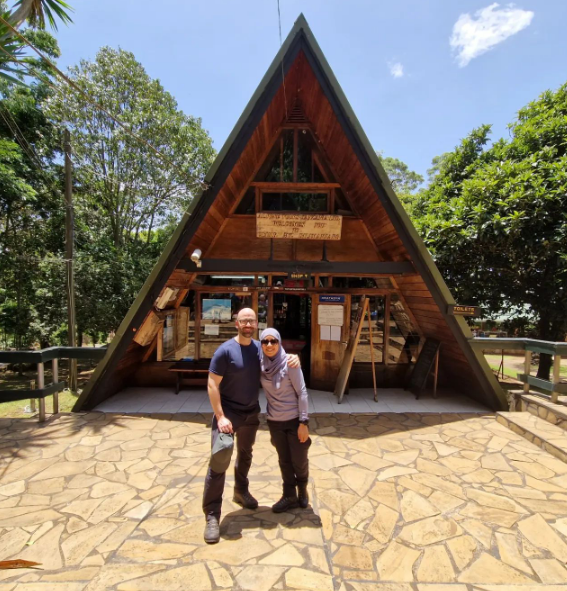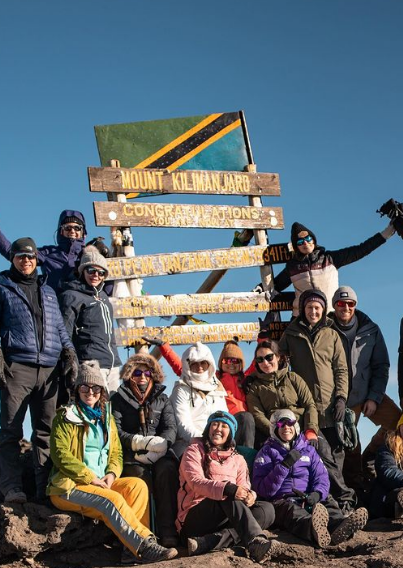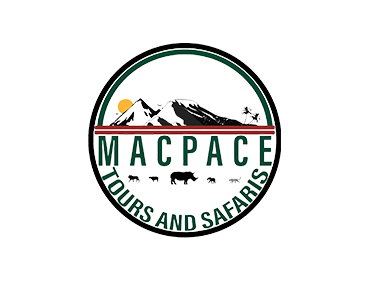Mount Kilimanjaro Climbing Tour Packages, Routes, and Costs | Everything You Need to Know (2025–2027)
Introduction to Climbing Mount Kilimanjaro
Standing tall at 5,895 meters (19,341 feet), Mount Kilimanjaro is Africa’s highest peak and the tallest free-standing mountain in the world. Nestled in northern Tanzania, it is a destination that captures both the imagination and the heart of every traveler. Known as the “Roof of Africa”, Kilimanjaro is more than just a mountain; it is a symbol of perseverance, natural wonder, and human triumph.
Every year, thousands of climbers from across the globe set out on the journey to its summit, Uhuru Peak, making Kilimanjaro one of the most popular trekking destinations in the world. Unlike other high-altitude peaks, Kilimanjaro requires no technical climbing skills, making it accessible to both first-time hikers and seasoned adventurers. This unique accessibility, combined with its breathtaking landscapes, is why Kilimanjaro consistently ranks among the top bucket-list adventures worldwide.
Why Climb Kilimanjaro in 2025, 2026, and 2027?
The coming years are particularly exciting for anyone planning a Kilimanjaro adventure:
-
Enhanced climbing services and support – Tour operators like Macpace Tours and Safaris have refined their itineraries to improve acclimatization and success rates. Expect budget-friendly Kilimanjaro group climbs, luxury climbs with upgraded amenities, and customized packages tailored for families and private groups.
-
Post-2025 travel revival – Global travelers are increasingly prioritizing transformational journeys, and Kilimanjaro stands out as one of the most meaningful experiences to mark a milestone or personal achievement.
-
Sustainable and ethical travel – There is a stronger emphasis than ever on eco-conscious climbing, fair porter welfare, and supporting local Tanzanian communities. By booking with responsible operators, climbers contribute to both conservation and community empowerment.
Fitness Level and Preparation
Although climbing Kilimanjaro does not require ropes, crampons, or mountaineering experience, it demands stamina, resilience, and preparation. Trekkers should be comfortable with:
-
Walking 6–8 hours a day on varying terrain.
-
Facing altitude changes and cooler summit temperatures.
-
Preparing through a mix of cardio, strength training, and practice hikes.
The mountain is often described as a “walkable challenge” it’s not the technical difficulty but the altitude that makes it demanding. With the right mental focus, guided support, and gradual acclimatization, climbers of all ages (from teens to older adults) successfully reach the summit every year.
👉 If you’re new to high-altitude trekking, consider reading our Kilimanjaro Preparation Guide for detailed training tips and gear recommendations.
Best Time to Climb Mount Kilimanjaro
One of the most common questions asked by climbers is: When is the best time to climb Mount Kilimanjaro? Since the mountain is located near the equator, it can be climbed year-round. However, conditions vary depending on the season, weather, and crowds, and choosing the right time can greatly impact your overall experience.
Seasonal Breakdown
-
January to March
These months offer some of the clearest skies and excellent summit visibility. The weather is generally dry at higher altitudes, while the lower slopes are lush and green. Fewer crowds make it an attractive choice for travelers who prefer peace and quiet on the mountain. Nights can be colder, but the reward is breathtaking sunrises over the ice fields. -
April to May (Long Rains)
This is the wettest season, with heavy rains on the lower slopes and muddy trails. However, it offers a unique opportunity for experienced trekkers seeking solitude and dramatic landscapes. Photographers often love this period for the moody skies and vibrant greenery. -
June to October (Dry Season)
The most popular time to climb Kilimanjaro, especially from July to September, when international travelers flock to Tanzania. Expect clear skies, warm daytime temperatures, and stunning panoramic views. This is also the safari high season, making it perfect for combining your climb with a Tanzania Safari Adventure. Be prepared for larger groups on popular routes like Machame and Lemosho. -
November (Short Rains)
Rain showers are frequent but usually lighter than in April–May. Trails are quieter, and the mountain’s vegetation becomes lush and vibrant. Trekkers who don’t mind a bit of rain can enjoy a more affordable and less crowded climb. -
December
December is a festive season on Kilimanjaro, with many climbers choosing to summit during the holidays and New Year. Expect busier trails, but also an unforgettable way to celebrate the season.
Recommendations for 2025–2027
For those planning their climbs in 2025, 2026, and 2027:
-
Best overall months: January–March and June–October for the most favorable weather and summit success rates.
-
For fewer crowds: Late January, February, or late September to October.
-
For photographers and adventurers: April–May or November for lush scenery and solitude.
-
For holiday climbers: December offers the magic of summiting Africa’s highest peak during festive celebrations.
👉 To make the most of your journey, we recommend booking at least 6–12 months in advance for the peak months, as spaces on popular routes fill up quickly.
Kilimanjaro Climbing Routes: A Comprehensive Guide
Mount Kilimanjaro has seven main routes to the summit, each with its own character, difficulty, and scenery. Choosing the right route is one of the most important decisions you’ll make when booking your climb. The right choice depends on your fitness level, climbing experience, budget, and the type of adventure you seek.
Machame Route – “The Whiskey Route”
The Machame Route is the most popular Kilimanjaro trail, attracting over 50% of climbers. It is often called the “Whiskey Route” because it is considered more challenging than the “Coca-Cola” Marangu Route.
-
Duration: 6–7 days
-
Difficulty: Moderate to challenging
-
Scenery: Lush rainforest, Shira Plateau, Lava Tower, Barranco Wall, and glaciers near the summit
-
Pros: Excellent acclimatization profile (“climb high, sleep low”), stunning scenery, high success rate
-
Cons: Can be crowded, especially in July–September
-
Best For: Adventurous first-time climbers looking for a balance of beauty, challenge, and success
👉 Learn more of the “Machame Route Kilimanjaro Packages” → our detailed Machame itinerary.
Lemosho Route – Scenic and Highly Successful
The Lemosho Route is widely regarded as the most beautiful trail on Kilimanjaro. It approaches from the west, offering a longer, more gradual climb that maximizes acclimatization.
-
Duration: 7–9 days
-
Difficulty: Moderate
-
Scenery: Remote rainforest, Shira Plateau, Western Breach views, and expansive panoramas
-
Pros: High summit success rate, fewer crowds at the start, diverse landscapes
-
Cons: Slightly more expensive due to longer duration
-
Best For: First-time climbers who want the best chance of success and plenty of time to adjust to altitude
👉 Explore the “Lemosho Route Kilimanjaro Climb” → Read your Standard Lemosho package page.
👉 Also checkout our article: “Budget-Friendly Kilimanjaro Climb via Lemosho Route.”
Marangu Route – “The Coca-Cola Route”
The Marangu Route is the oldest and most established trail. Unlike all other routes, it offers hut accommodation instead of tents.
-
Duration: 5–6 days
-
Difficulty: Moderate (but lower summit success due to fewer acclimatization days)
-
Scenery: Rainforest, moorland, alpine desert, and glaciers
-
Pros: Hut accommodations (less camping gear needed), straightforward path, relatively affordable
-
Cons: Crowded, lower summit success, limited scenic variety compared to Machame or Lemosho
-
Best For: Budget travelers, groups seeking hut stays, or those with limited time
👉 Here is the [Marangu Route Kilimanjaro Tour → ] our Marangu package page.
Rongai Route – The Northern Approach
The Rongai Route starts from the north, near the Kenyan border. It is drier and less crowded than southern routes, making it unique.
-
Duration: 6–7 days
-
Difficulty: Moderate
-
Scenery: Different approach with views of Mawenzi Peak, drier trails, alpine desert landscapes
-
Pros: Fewer crowds, drier conditions (good in rainy season), gradual ascent
-
Cons: Less varied scenery than Machame or Lemosho
-
Best For: Climbers looking for solitude, or those climbing during the rainy seasons
👉 See the Rongai Route Kilimanjaro Package → our Rongai package page.
Northern Circuit Route – The Longest and Most Scenic
The Northern Circuit is the longest trail on Kilimanjaro and offers the best acclimatization and panoramic views.
-
Duration: 8–9 days
-
Difficulty: Moderate (longer days but better acclimatization)
-
Scenery: 360° views of Kilimanjaro, remote trails, vast high-altitude landscapes
-
Pros: Highest success rates due to gradual ascent, very quiet, diverse scenery
-
Cons: Longer and more expensive
-
Best For: Climbers who want maximum summit success and solitude, with time for a longer trek
👉 Discover the Northern Circuit Kilimanjaro Itinerary → our Northern Circuit detailed package.
Umbwe Route – The Steepest and Most Challenging
The Umbwe Route is the shortest and steepest way up Kilimanjaro. It is extremely challenging and not recommended for beginners.
-
Duration: 5–6 days
-
Difficulty: Very difficult, steep, demanding
-
Scenery: Dense rainforest, steep ridges, direct to Barranco Valley
-
Pros: Shortest route, less crowded
-
Cons: Poor acclimatization, low summit success rate, physically demanding
-
Best For: Experienced trekkers, thrill-seekers, and those with strong high-altitude hiking experience
👉 See the Umbwe Route Kilimanjaro Climb → our Umbwe package page.
Shira Route – A High-Altitude Start
The Shira Route begins at Shira Ridge, starting at a higher altitude compared to other routes. It is scenic but can pose risks for altitude sickness at the beginning.
-
Duration: 6–7 days
-
Difficulty: Moderate to challenging (due to high-altitude start)
-
Scenery: Shira Plateau, volcanic formations, and alpine desert
-
Pros: Beautiful and less crowded, overlaps with Lemosho route after day 2
-
Cons: Risk of altitude sickness due to rapid start at 3,600m
-
Best For: Trekkers with prior high-altitude trekking experience
👉 View the Shira Route Kilimanjaro Tour → our Shira route detailed package.
Kilimanjaro Tour Packages: What to Expect
Booking a Kilimanjaro climb isn’t just about choosing a route, it’s about selecting the right package that fits your travel style, budget, and expectations. Tour packages vary in terms of accommodation, group size, services, and budget level, but all share one goal: helping you reach the summit safely and enjoyably.
Here’s what to expect from the main types of Kilimanjaro climbing packages:
1. Group Climb Packages – Affordable & Social
Group climbs are a popular choice for budget-conscious travelers who want to share the adventure with others. Climbers from different parts of the world join the same trek, creating a fun and social atmosphere.
-
Group Size: Usually 6–12 climbers
-
Advantages: Lower cost (shared services), built-in support network, great for solo travelers
-
Considerations: Less flexibility in dates and pace, limited customization
-
Best For: Solo travelers, budget adventurers, and those who enjoy meeting new people
👉 See the “Group Kilimanjaro Climb Packages” → our group climbing offers page.
2. Private Climb Packages – Flexible & Personalized
A private climb allows you to set your own pace, dates, and preferences. Whether it’s just you, a couple, a family, or a group of friends, this option gives you maximum flexibility.
-
Group Size: 1–8 climbers (fully private)
-
Advantages: Custom itineraries, flexible dates, more personalized service, private guides and porters
-
Considerations: Higher cost than group climbs
-
Best For: Couples, families, or small groups who want a tailored climbing experience
👉 Internal link suggestion: Anchor text “Private Kilimanjaro Tours” → Link to your private trekking packages page.
3. Luxury Climb Packages – Comfort on the Mountain
For travelers who want to combine adventure with comfort, luxury Kilimanjaro climbs provide premium services, gourmet meals, and upgraded camping arrangements.
-
Features: Spacious private tents, comfortable sleeping arrangements, portable showers, better staff-to-climber ratio, high-end meals
-
Advantages: Extra comfort at high altitude, higher staff support, best for those who want to balance adventure with luxury
-
Considerations: Premium pricing
-
Best For: Luxury travelers, honeymooners, executives, or anyone seeking the most comfortable climbing experience
👉 Internal link suggestion: Anchor text “Luxury Kilimanjaro Climb Packages” → Link to your luxury climb page.
4. Budget-Friendly Climb Packages – Affordable Adventure
Budget packages focus on making Kilimanjaro accessible to more travelers without compromising safety. They include essential services while cutting out extras.
-
Features: Standard camping gear, shared services, basic but nutritious meals
-
Advantages: Most affordable way to climb Kilimanjaro, includes all essential logistics, still led by experienced guides
-
Considerations: Fewer add-ons or comfort upgrades compared to standard or luxury packages
-
Best For: Students, backpackers, or travelers on a strict budget who want to experience Kilimanjaro without overspending
👉 Internal link suggestion: Anchor text “Budget Kilimanjaro Tours” → Link to your budget trekking package page.
👉 Also link to your blog/article “Budget-Friendly Kilimanjaro Climb via Lemosho Route.”
5. Standard Packages – The Balanced Choice
The standard Kilimanjaro climb package is the most popular option for most travelers. It balances affordability, comfort, and quality service.
-
Features: Professional guides, camping gear, three meals a day, safety equipment, airport transfers
-
Advantages: Great balance of cost and comfort, suitable for most climbers
-
Considerations: Less personalized than luxury, but more comfortable than budget options
-
Best For: Most first-time climbers who want quality and value
👉 Explore “Standard Kilimanjaro Climb Packages” → our standard climb page.
6. Tailor-Made Climb Packages – Fully Customized
Some climbers prefer a custom itinerary that combines Kilimanjaro with other experiences like a Tanzania safari, Zanzibar beach holiday, or cultural tours.
-
Features: Flexible routes, combined itineraries, personalized services
-
Advantages: Perfect for multi-experience travelers, total control over trip design
-
Considerations: Requires planning, cost depends on customization
-
Best For: Travelers looking to combine Kilimanjaro with a complete Tanzania experience
👉 Explore “Tailor-Made Kilimanjaro & Safari Packages” → a combined safari + Kilimanjaro itineraries.
Kilimanjaro Climbing Costs: A Detailed Breakdown
Many travelers ask, “How much does it cost to climb Mount Kilimanjaro?” The answer depends on several factors including the route, duration, package type, and level of comfort you choose. Climbing Kilimanjaro is not cheap, but when you understand the cost structure, you’ll see where your money goes—and why booking with a trusted local operator like Macpace Tours and Safaris ensures both value and safety.
1. Kilimanjaro Park Fees and Permits
The Tanzanian government charges official fees for all climbers. These costs are unavoidable and go directly toward park conservation, trail maintenance, and ranger services.
-
Conservation fees: Around $70 per person per day
-
Camping or hut fees: $50–$60 per night (depending on route)
-
Rescue fees: $20 per trekker
-
Value Added Tax (VAT): 18% on services
👉 These fees alone can add up to $800–$1,200 per climber, depending on the number of days you spend on the mountain.
Internal link: Anchor text “Kilimanjaro Routes” → link to your routes guide section, since duration and costs are closely tied to the chosen route.
2. Tour Operator Costs
Tour operator pricing varies depending on whether you choose a budget, standard, or luxury package.
-
Budget Packages: From $1,700–$2,000 per person for shorter routes (basic camping, shared services).
-
Standard Packages: From $2,200–$2,800 per person (balanced comfort and affordability).
-
Luxury Packages: From $3,500–$6,000+ per person (private tents, gourmet meals, premium services).
These prices typically cover:
✅ Professional guides licensed by Kilimanjaro National Park
✅ Porters to carry equipment
✅ Three meals per day
✅ Camping equipment (or hut accommodation on Marangu route)
✅ Transfers to and from the mountain gate
Internal links:
-
“Budget Kilimanjaro Packages” → link to your budget climb page
-
“Luxury Kilimanjaro Climb Packages” → link to your luxury climb page
3. Equipment Rental or Purchase Costs
If you don’t have your own trekking gear, you can rent in Moshi or Arusha.
-
Sleeping bag: $30–$40
-
Trekking poles: $15–$20
-
Down jacket: $30–$50
-
Boots & gloves: $20–$40
-
Headlamp: $10–$15
👉 Total rental costs usually range between $100–$200 per trek.
Internal link: Anchor text “Kilimanjaro Gear Checklist” → link to your gear/preparation blog.
4. Tipping Guidelines for Guides, Porters, and Cooks
Tipping is a standard practice on Kilimanjaro and an important way to support the hardworking team that makes your climb possible.
-
Lead guide: $20–$25 per day
-
Assistant guide: $15–$20 per day
-
Cook: $15 per day
-
Porters: $8–$10 per porter per day
👉 For a 7-day climb, tips often range between $250–$400 per climber (shared among the team).
Internal link: Anchor text “Tipping on Kilimanjaro” → link to a detailed tipping guide blog.
5. Miscellaneous Expenses
In addition to your tour package, climbers should budget for extra expenses:
-
Flights to Tanzania: $600–$1,200 (depending on origin)
-
Visa fees: $50 (or $100 for US citizens)
-
Travel insurance: $100–$300 (mandatory, must cover high-altitude trekking & medical evacuation)
-
Vaccinations/medications: Costs vary
-
Hotel stays pre/post climb: $50–$150 per night depending on comfort level
-
Personal expenses: Snacks, souvenirs, gear shopping
Internal link: Anchor text “Travel Insurance for Kilimanjaro” → link to your insurance/pre-trip blog.
6. Total Estimated Costs
When all factors are included, most climbers should expect to spend:
-
Budget Climb: $2,000–$2,500 total
-
Standard Climb: $2,800–$3,500 total
-
Luxury Climb: $4,500–$7,000+ total
💡 Tip: Be wary of operators offering prices below $1,500. Very low-cost climbs often cut corners on safety, equipment, or fair porter wages.

